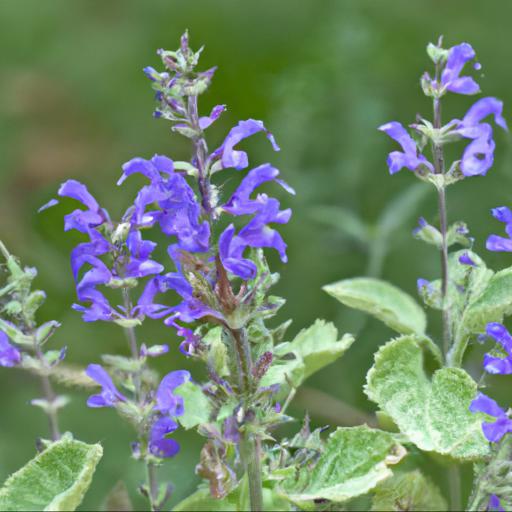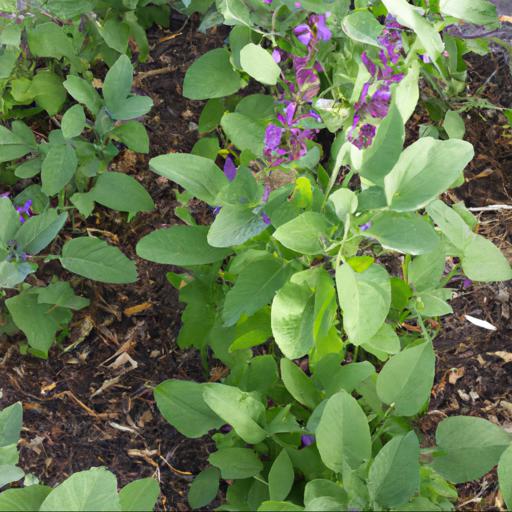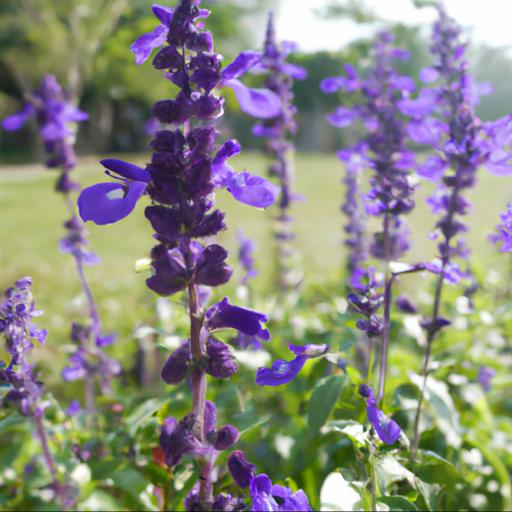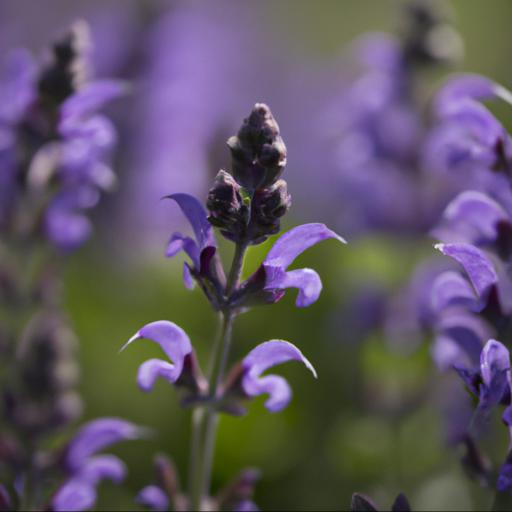Salvia officinalis purpurascens is a species of sage, a flowering plant native to the Mediterranean region. It is an evergreen shrub with a unique purple-tinged foliage and a pleasant, slightly sweet aroma. This plant has been used for centuries in traditional medicine, as an ingredient in cooking, and as a natural remedy for a variety of ailments.
In this blog, we will explore the benefits of Salvia officinalis purpurascens, its uses, and how to grow and care for it. We will also discuss the potential side effects of using this plant, as well as the best ways to harvest and store it.
So, if you are looking for a natural remedy or a flavorful ingredient, Salvia officinalis purpurascens may be the perfect choice for you.
Benefits of salvia officinalis purpurascens

If you’re looking to add some colour, texture, and intrigue to your UK garden, salvia officinalis purpurascens is the perfect option. Also known as ‘Purple Sage’, this beautiful and aromatic flowering plant provides a stunning contrast to its green neighbours and will give your garden a vibrant, contemporary look. Aside from its striking colour and fragrance, salvia officinalis purpurascens also has some incredible therapeutic benefits.
Once the aromatic oils are released in the air, they help to soothe and calm the senses while simultaneously energizing and stimulating the body. This means that when you spend time in your garden, you’re getting the bonus of natural aromatherapy!
In addition to providing a unique and beautiful presence in your garden, salvia officinalis purpurascens is incredibly easy to care for. It loves partial shade and well-drained soil, and its hardy nature makes it both drought- and cold-tolerant.
Keeping a healthy sage plant in your garden is sure to be a wonderful, stress-free experience. As you can see, salvia officinalis purpurascens offers numerous benefits that you simply can’t find in other plants. From its gorgeous colour to its therapeutic fragrance, this purple sage is sure to be the perfect complimentary addition to any UK garden.
How to grow salvia officinalis purpurascens

Gardening experts say that Salvia officinalis purpurascens, or “Purple Sage”, can be a great addition to any outdoor flowerbed or garden. This hardy perennial plant is native to southern Europe and grows up to about 24 inches in height, with long, delicate stems and beautiful fragrant violet flowers that flower from mid-June to early September. Growing Salvia officinalis purpurascens, or “Purple Sage” is relatively easy.
Since it is a true sun-loving plant, it needs at least six hours of direct or dappled sunlight to reach its full potential. It’s also important to ensure that the soil in which the plant is growing is well-draining as Purple Sage can’t tolerate wet feet.
During the warmer months, Purple Sage should be watered moderately, but watering should be reduced during the winter. A good rule of thumb is to water when the top one to two inches of soil is dry.
Finally, to get the most out of your Purple Sage, it’s important to feed it with a balanced liquid fertilizer every few weeks during the summer months to ensure that it remains healthy and vibrant all year round. Pruning is also beneficial and can help to keep the plant in good shape. When pruning, it’s important to avoid removing more than one-third of the plant’s foliage at any one time.
By taking these simple steps, your Salvia officinalis purpurascens can flourish, bringing a wonderful display of fragrant violet flowers to your garden in the summer months.
How to use salvia officinalis purpurascens

Growing Salvia officinalis purpurascens, commonly known as Purple Sage, is an easy and rewarding way to add a bit of pizzazz to your garden. Botanists regard salvia as one of the most colorful and attractive perennials due to its dense, arching clusters of bright purple blooms. This species of Sage grows best in well-drained soil in locations that receive plenty of sunshine and a moderate amount of water.
It’s also an excellent choice for beds, borders, and pots. The way you approach planting and caring for your purple sage plants will make all the difference when it comes to getting the most out of them.
When planting, it’s important to make sure the spot you choose isn’t too wet or “damp” – this could stunt the growth of your Purple Sage. As the plants are still young, be sure to water them frequently and make sure they get at least 6 hours of sunlight each day.
Once your Purple Sage is established, there are still several things you can do to ensure its continued growth and health. Regular pruning is important to encourage the formation of dense and healthy foliage. Deadheading the spent blooms will also ensure that your plants continue producing bright colored flowers.
You can also nurture your plants with a balanced liquid fertilizer, especially during the spring and summer growing season. With a little extra care and attention, your Salvia officinalis purpurascens will remain vibrant, colorful, and a truly delightful sight.
Our video recommendation
Final Touch
Salvia officinalis purpurascens, commonly known as Purple Sage, is an aromatic herb with a long history of medicinal use. It is native to the Mediterranean region and has been used in traditional medicine for centuries to treat a variety of ailments, from digestive issues to skin problems. The plant has a distinctive purple color and its leaves are used to make teas and tinctures.
It has a pleasant, earthy aroma and a slightly bitter taste. Not only is it a useful medicinal herb, but it can also be used as an ornamental plant in the garden.
FAQ
What are the benefits of Salvia officinalis purpurascens?
The benefits of Salvia officinalis purpurascens include its ability to reduce inflammation, improve digestion, and boost the immune system. It can also help to reduce stress and anxiety, improve sleep, and provide relief from headaches. Additionally, it can help to improve skin health and reduce the risk of certain types of cancer.
How is Salvia officinalis purpurascens used in traditional medicine?
Salvia officinalis purpurascens is traditionally used in medicine as an antiseptic, anti-inflammatory, and diuretic. It is also used to treat digestive problems, headaches, and skin conditions.
What are the active compounds in Salvia officinalis purpurascens?
The active compounds in Salvia officinalis purpurascens include rosmarinic acid, salvianolic acid, and carnosic acid.
How does Salvia officinalis purpurascens compare to other species of Salvia?
Salvia officinalis purpurascens is a species of Salvia that is distinguished by its purple-tinged foliage and bright pink flowers. It is a hardy perennial and is more tolerant of cold temperatures than other species of Salvia. It is also more tolerant of drought and prefers well-drained soil.
What are the potential side effects of using Salvia officinalis purpurascens?
The potential side effects of using Salvia officinalis purpurascens include nausea, dizziness, headache, dry mouth, and increased heart rate. It may also cause drowsiness and confusion. In rare cases, it can lead to hallucinations and disorientation.
How can Salvia officinalis purpurascens be grown in the home garden?
Salvia officinalis purpurascens can be grown in the home garden by planting it in well-drained soil in a sunny spot. It should be watered regularly and fertilized every few weeks. It can be propagated through cuttings or division. Pruning should be done in late winter or early spring to encourage new growth.

